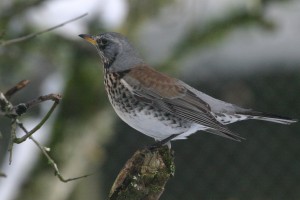 It is almost as if the countryside is now waiting for the first of the wintering birds to arrive. The swifts and cuckoos have long gone south to their African wintering haunts. Swallows and sand martins are gathering in reed beds in huge roosts although a few pairs are still rearing late broods of chicks in their nests. The large roosts, sometimes hundreds of birds, will be there for a while and then suddenly, they will be gone with both swallow and sand martins spending the winter in Africa. Try to picture their flight and route as they will cross the mighty and formidable Sahara Desert. The even smaller birds such as the warblers, amongst them the willow warblers and chiffchaffs, winter in West Africa and start the long journey in short distances. They will refuel in Iberia and then fly the long trek to their final winter quarters.
It is almost as if the countryside is now waiting for the first of the wintering birds to arrive. The swifts and cuckoos have long gone south to their African wintering haunts. Swallows and sand martins are gathering in reed beds in huge roosts although a few pairs are still rearing late broods of chicks in their nests. The large roosts, sometimes hundreds of birds, will be there for a while and then suddenly, they will be gone with both swallow and sand martins spending the winter in Africa. Try to picture their flight and route as they will cross the mighty and formidable Sahara Desert. The even smaller birds such as the warblers, amongst them the willow warblers and chiffchaffs, winter in West Africa and start the long journey in short distances. They will refuel in Iberia and then fly the long trek to their final winter quarters.
In contrast many birds numbering in their tens of thousands, if not more, will soon be flying in on their annual flights from their northern breeding grounds to winter in the Highlands. Their northern breeding grounds vary from Iceland and Greenland to Scandinavia and northern Russia and even further. Some are conspicuous such as the geese that delight us as their skeins fly over calling to each other to keep in contact. The even larger whooper swans make their journey from Iceland in one flight with some having made their relatively short flight from Greenland. Others such as bramblings, chaffinches and goldcrests move in, with some of them migrating overnight. The chaffinches you have in the garden at present may soon be boosted by birds from Scandinavia bringing some bramblings with them.
However, although the larger birds such as geese, swans and ducks are impressive one of my favourite groups are the thrushes. This is a family that includes blackbirds, song thrushes, mistle thrushes, fieldfares and redwings. The fieldfares and redwings suddenly seem to arrive overnight and they do indeed fly in the darkness. Soon I will delighted to stand outside in the dark and hear the characteristic notes of the redwings coming in from Iceland. I have seen them breeding there and, because there are so few trees, the birds nest on the ground, sometimes in loose colonies. They have the advantage that there are no ground predators, that is apart from the arctic fox. In the Highlands in winter the redwings often form large mixed parties with fieldfares that have come in from Scandinavia. Both these thrushes specialise in autumn berries and the now heavily laden rowan trees are great favourites for them. If they come in very large numbers the trees will be soon be stripped and then they have to move south or south west to find other supplies.
For some unknown reason, if the weather turns bad the occasional fieldfare, often only a single bird, will come into the garden where I have seen them feeding on apples. I took the photograph last year when there was snow around and this fieldfare spent about a fortnight taking whatever food it could find. I had frozen some rowan berries and put them out but for some reason they were not taken either by the fieldfare or indeed by any other birds such as blackbirds. So the scene is set and perhaps the first of the migrants will be, as is often the case, the geese. The first we will know is likely to be the callings of the skeins high overhead as if heralding the coming of winter.
